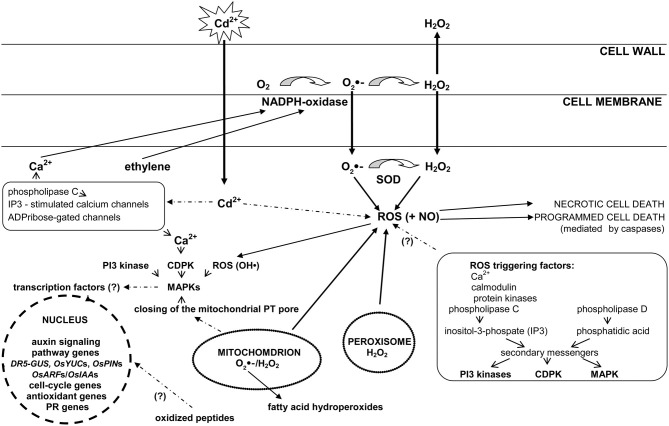Figure 1.
The role of reactive oxygen species in cadmium signal transduction. In response to Cd reactive oxygen species (ROS) can be formed in non-enzymatic and enzymatic reactions (for e.g., catalyzed by NADPH oxidase, superoxide dismutase enzymes) in various cell compartment such as: plasma membrane, mitochondria, or peroxisomes. NADPH oxidase-dependent generation of ROS is regulated by cytosolic free calcium and ethylene. Increase in calcium levels requires phospholipase C activity as well as involves inositol-3-phosphate (IP3)-stimulated calcium channels and ADPribose-gated channels (box on the left). Apart from calcium Cd-induced ROS production is triggered by calmodulin, protein kinases, phospholipase C, and phospholipase D (box on the right). Phospholipases initiate further signaling through increased levels of phosphatidylinositol-triphosphate (IP3) or phosphatidic acid. These molecules activate secondary messengers such as lipid and protein kinases, including phosphatidylinositol 3-kinase (PI-3-kinase), mitogen-activated protein kinases (MAPKs), and calcium-dependent protein kinases (CDPKs). Cd-induced activation of MAP kinases requires not only ROS, but also Ca-dependent protein kinase (CDPK) and PI3 kinase, and may be triggered by closing of the mitochondrial PT pore. ROS-induced (for e.g., by means of MAP kinases activity) secondary messengers may modify transcription factors hence affect the expression of plant signaling and defense genes. ROS in interaction with nitric oxide (NO) are involved in signal transduction leading to necrotic and programmed cell death.

